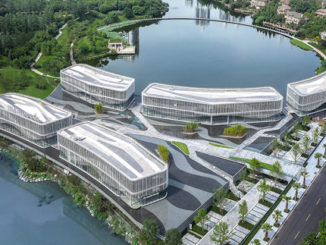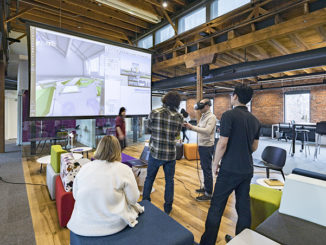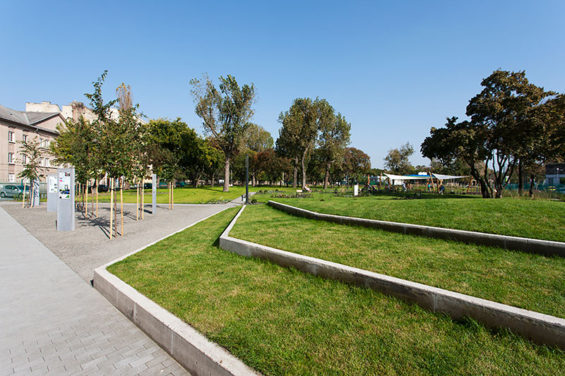
Teleki Square is located in Budapest’s centre’s socially most diverse and colorful areas, in one of the city’s most disadvantaged neighbourhoods. Following a successful EU tender for funding the renovation of the square, an inclusive community-based planning process was initiated that would result in what was once a barren, ill-reputed, crime-ridden and functionless space becoming a vital neighbourhood centre.
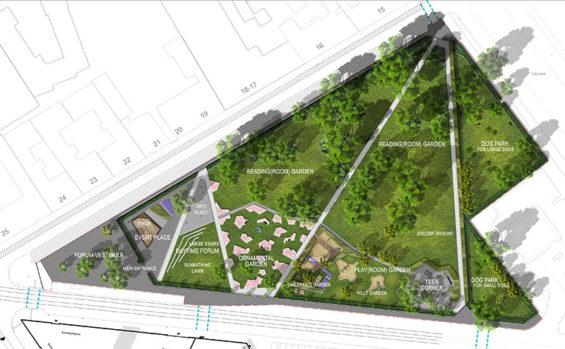
Philosophy, concept and space structure
The onetime marketplace, which evolved in 1805 has been referred to as Teleki László Square (named after a statesman known for his open, progressive views) since 1873. The square before was always a colorful centre of the area, where the city and the countryside met: poultry, cattle and furniture fairs were held here. Our concept aims to reanimate this now totally abandoned place as a lively meeting place, the green heart of the quarter. Hence the park serves to help openness, tolerance and multiculturality arise again in the neighborhood. To ensure this, the main functions of the park are designed to promote social interaction on many levels.
The square’s unusual triangular geometry is structured with a circulation system that divides the park into further triangular spaces that both functionally and visually evolve from a lively city atmosphere to one that recalls serenity of the countryside. As so the forum and event space found nearest to the city serve as meeting points; the ornamental community garden provides space for locals to plant flowers; the quiet shady resting area is one where people can play chess or simply read a book under the grand trees. The children’s gardens and the teen corner offer meeting spots for kids, while the dog gardens provide dogs and owners a vast space to hang out in.
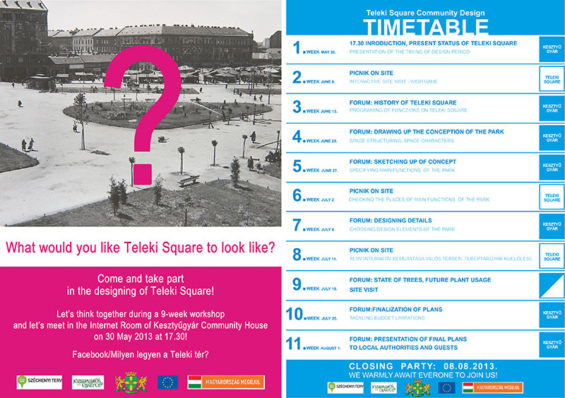
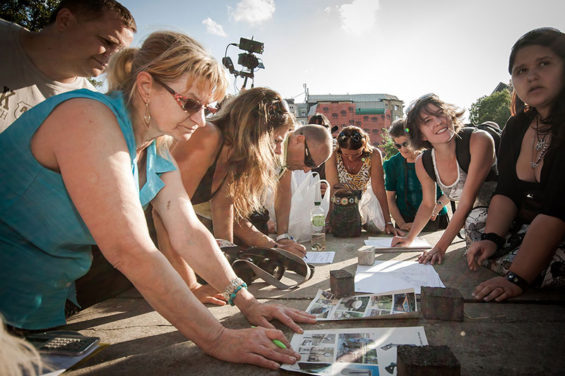
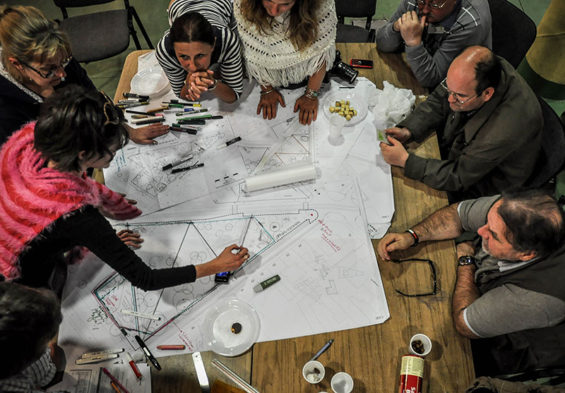
Community design process
The community planning process spanned 12 meetings over two months and engaged a diverse neighborhood team, including elderly people, young intellectuals and high school students. A variety of tools and methods were used to actively engage them in research, mapping and planning so that the process was a group effort instead of a top-down one. This included lectures and discussions/debates, as well as on-site activities like interactive mapping, temporary land art installations and photo exhibits. To provide a better insight to the project for those who couldn’t join the process we made video summaries of all the meetings, which could be viewed on our Facebook page. We also created an on-site exhibition where we displayed photos and posters after each meeting showing the results achieved until that moment. The inclusive planning process was essential in creating an inclusive design concept.
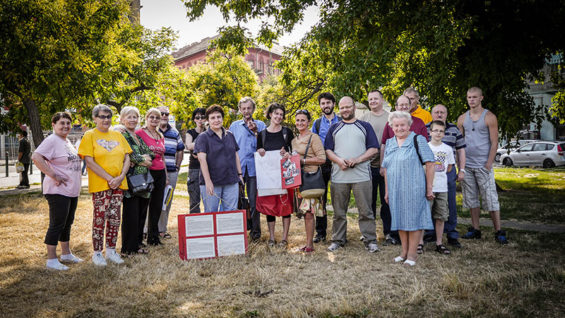
Teleki Square Association
Apart from the realization of the inclusive design concept, one of the most important outcomes of the process based design was the formation of the Teleki Square Association which now takes active part in the present and future activation of the area. The residents already took part in the organization of numerous public art events, developed their own programs such as the Garden Party to celebrate the end of the design phase, and even organized a Christmas party on the site. These cultural activities already show that they can be effective tools in place-making and strongly contribute to changing and developing future perspectives of the community.
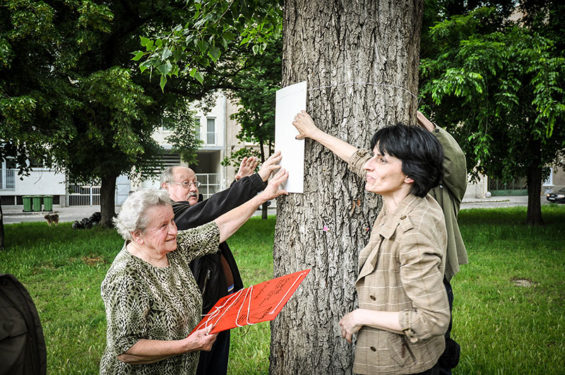
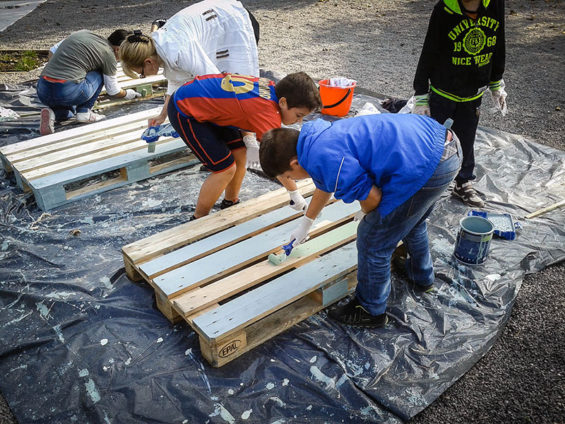
Conclusion
The process based community project – an approach not so widely used yet in Hungary – tries to be a positive example in underpinning that community planning helps stimulate participatory citizenship, empowers citizens and enables them to take action in their lives to effect changes in their immediate environment. It also tries to show that involving locals in the design process plays an important role in exploring local identity and in creating socially-inclusive spaces, hence giving a base to social, hence physical sustainability.
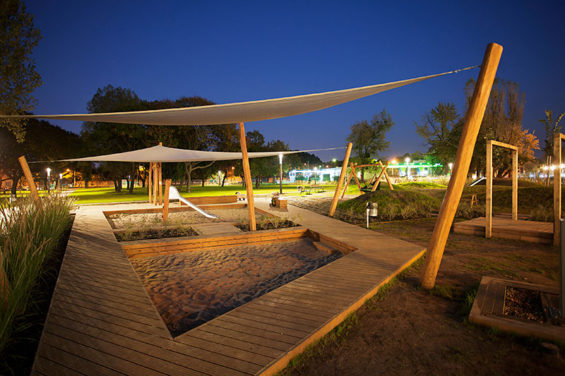
The community-based reinvention of Teleki Square aims to show that interventions which promote cooperation, interaction and participation, – through which strong local community identity can be developed – play an increasingly important role in societies of today, taking active part in creating lively, livable cities. The future of the park now is imagined as one which is full of life and frames different activities that will encourage people to interact, consequently helping the creation of an open, culturally richer and socially embedded environment to arise.
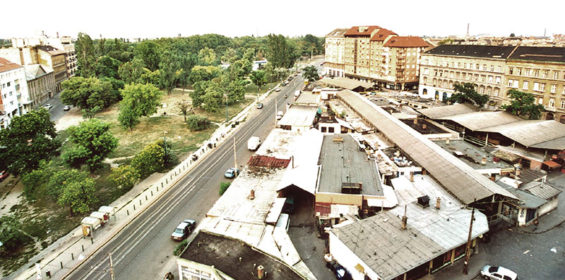
The community-based reinvention of Teleki Square, Budapest
Data of park
Location |Teleki Laszlo Square, Budapest, Hungary
Design | Ujirany / New Directions Landscape Architects (Dominika Tihanyi, Orsolya B. Orosz, Arpad Kovacs, Gabor Szohr), Kristin Faurest, locals
Engineers | GÉM Ltd.
Ganz HYDRO Ltd.
Client | Municipality of Jozsefvaros, 8th district of Budapest
Building contractor/executor | ZÖFE Ltd.
Playground equipments contractor | Ilona-Malom Műhely Ltd.
Design Year | 2013
Year of Construction | 2014
Area | 14 000 m2
Budget | 456 000 euro (32.5 euro/m2)
Photos | Ujirany / New Directions Landscape Architects, Tamas Bujnovszky, Tibor Vermes, Gyula Nyari
Text | Ujirany / New Directions Landscape Architects, Kristin Faurest

